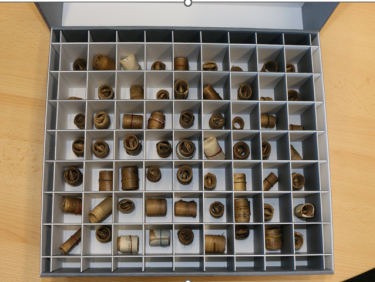Postcolonial Restitution in the Digital Age:
Archiving and Contextualizing a Private Collection of Nepalese Manuscripts

Apart from the usual preservation procedures, archiving material from private donors often needs additional attention. The provenance and legacy of the collected items need to be documented as neatly as possible, particularly in asymmetrical acquisition contexts. Such was the case with a collection of manuscripts donated to the Nepal project of the Heidelberg Academy of Sciences.
During the 1980s and 1990s, a Bavarian businessman and philatelist with longstanding ties to Nepal gathered an extensive and diverse collection of historical and literary sources from Nepal. Initially handed over to the Institute for Indology and Tibetology at the University of Munich by the collector’s son, in 2018 the material was passed on to the Research Unit “Documents on the History of Religion and Law of Pre-modern Nepal” of the Heidelberg Academy of Sciences and Humanities, which is the only institution devoted to historically oriented Nepal studies in Germany.
The collection contains palm-leaf rolls with clay seals mostly from the late Malla period (1500–1800 CE), Nepalese deeds and royal documents from the Shah period (1800–1950 CE), several volumes of bound books recording events in the palace, state trips and visits, governmental correspondences, and historiographical accounts. There are also handwritten manuscripts of Sanskrit texts on rituals, medicine, elephant taming and moral education as well as law texts in Nepali and British-Indian court records. Apart from that, mention must be made of miscellaneous material such as historical photographs, maps, newspaper cuttings, brochures, speech notes and printed law texts. These documents enable a unique perspective on the manifold transformations Nepal underwent throughout the early modern and modern period (c. 1600–1950). They also bear witness to the constitutive role of transnational entanglements and multilingualism for the country’s cultural history.
In 2021, the research unit started to preserve the collection and make it publicly available. The collection, which had been handed over in simple cartons or wrapped in cloth, got repacked in an acid-free storage system suitable for long-term preservation. Specimens of the collection were sent to Heidelberg University Library to create test digital images. The modalities of retributing the material to Nepal in close cooperation with Nepalese and German experts in legal, heritage and archival studies are presently being worked out.




